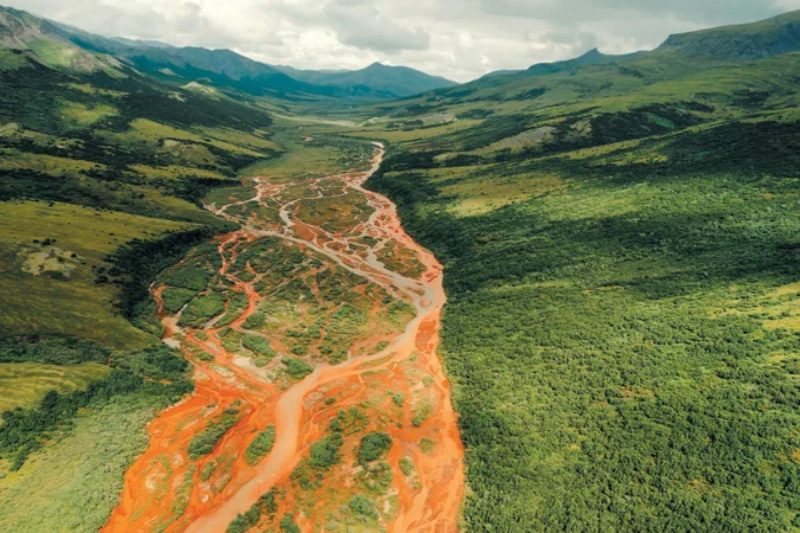Scientists are attempting to determine the precise cause of Alaska’s brilliant orange river color shift.
Scientists have recently noticed that streams and rivers in Alaska’s Arctic area have taken on a vivid orange hue. The National Park Service is particularly concerned about the recent discoloration of the Salmon River, which is a designated national wild and scenic river in Kobuk Valley National Park. The Salmon River’s clear waters abruptly turned orange-green in the summer of 2019, despite data indicating that the river’s water was immaculate before to that time.
According to Scientific American, this is also occurring to rivers and streams throughout Alaska’s Brooks Range, and it is probably going to happen in other sections of the Arctic.
According to a recent feature in the magazine on the phenomena, specialists who have examined the rusting rivers conclude that climate change is ultimately responsible. Research indicates that the Arctic is experiencing global warming more quickly than the rest of the planet.It is believed that the thawing of permafrost—ground that is often permanently frozen—in the national park and other areas is the result of those rising temperatures. However, it is still unclear how the rivers’ orange color resulted from the thawing of permafrost.
According to some experts, iron from bedrock is being leached by acid from minerals; the iron-oxidizing sediments turn rusty orange when exposed to air and running water.
Another theory holds that bacteria can lower oxidized iron when frozen soil beneath a wetland thaws. In contrast to oxidized iron, reduced iron dissolves in water. According to a report by Scientific American, it becomes oxidized again when groundwater brings it into an oxygenated stream, which causes the stream to turn orange.
It’s critical to identify the phenomenon’s source in order to assess any potential ecological effects, including any risks to the wildlife that lives in the rivers and the communities that depend on them for fish and drinking water.
According to Scientific American, a number of the Wulik River’s tributaries have started turning orange. This might have a big effect on Kivalina, a community of 444 people that depends on the river for fish and water.
Roman Dial, an Alaska Pacific University biology and mathematics professor, informed the magazine of the changes he’s observing, saying, “It’s fascinating from a scientific point of view, but from an emotional point of view it’s sad.” “The alarming thing is how far our human reach is, in a big way.”
Newsweek reached out to researchers from the U.S. Geological Survey (USGS) for their thoughts via email and Dial through a form on the website of Alaska Pacific University.
The USGS is working on a project to map the locations and times of orange rivers and streams in Alaska.
According to the USGS website, the study will examine the implications for water quality and ecosystems while testing a number of theories regarding their cause and relationship to warming and thawing landscapes.





